Lemongrass aquarium: how to create a colorful underwater world
An aquarium is a harmonious environment that requires the attention and care of its owners. Caring for a container with fish involves planting algae. Among more than 300 species of such plants, aquarium lemongrass is especially popular.
Content:
Description of lemongrass aquarium
The favorite of aquarists belongs to the Akantov family. The scientific name is straight nomaphila. Under natural conditions, it is found in Southeast Asia, Africa. Feels good in a pond with stagnant water or weak currents.
This unusual plant has gained popularity due to its beautiful appearance. Lemongrass as an element of decor looks great in a large aquarium.
If properly cared for, nomaphila grows large and beautiful.
Its long, straight leaves are light green above and silvery below. They move in different directions from a strong, powerful stem. The root of the plant is strong and well developed. Lemongrass in a volumetric container can grow so much that it will come to the surface. Such a plant will decorate both the greenhouse and the paludarium. When there is not enough space, its development slows down. At the same time, attractiveness does not suffer in the least.
In addition to straight nomaphila (lemongrass), aquarists breed long-leaved nomaphila and thailand nomaphila. The first species was bred artificially. This plant is 40-60 cm tall with an elongated, straight stem. The length of pointed leaves is up to 10 cm. The homeland of the second species is Indochina. The linear leaf plate grows up to 12 cm in length and up to 2 cm in width.
Little tricks of growing a plant:
- All varieties of nomafil are recommended to be planted in a group. To make them grow faster, it is allowed to shorten the stem.
- A tall plant that has reached the surface of the aquarium can shed the leaves left under the water.
- Cutting is an easy way to propagate lemongrass. Young roots and leaves appear on the mother plant. They are separated by cutting off the top of an adult by about 7 cm. The shoots are planted in previously prepared soil.
- An adult lemongrass does not suffer from such a procedure. He begins to bush even more, forms new cuttings.
Lemongrass aquarium is an Asian plant worthy of becoming the main adornment of the underwater world.
Features of lemongrass care
When raising a tropical guest in an aquarium, attention should be paid to:
- Lighting.
- Temperature regime.
- Soil properties.
- Water.
- Top dressing.
Lemongrass does not tolerate cold. The ideal temperature for him is from 22 to 280 C.
The plant is suitable for a mild to medium hardness aquatic environment. It must be clean. The water is partially changed once a week (up to 30% of the liquid volume).
Nomafile needs intensive lighting. The duration of its daylight hours is 12 hours. It is recommended to select fluorescent lamps in such a way that for every 1 liter of volume there is 0.5 W of their power.
Lemongrass loves direct sunlight.
The plant will like it if you put the aquarium on the windowsill or as close to the window as possible. Incandescent lamps provide additional side illumination. Such a lighting system will allow for a long time save old leaves.
Ground requirements:
- Sufficient concentration of nutrients, a lot of silt.
- The thickness of the soil layer at the bottom of the aquarium is 5-7 cm.
- When transplanting nomaphila, clay is placed under the roots.
- The very nature of the substrate does not play a big role, since the plant has strong roots.
- Schisandra is very sensitive to changes in the environment. A sharp violation of living conditions can cause illness. Given this, you should not get carried away with top dressing.
- Nomafila reacts especially hard to high concentration of sodium ions. Baking soda and table salt are added to the water with great care.
The plant will actively develop in the paludarium and greenhouse. Much faster than in an aquarium. It immediately grows in a low container filled with water. After the formation of aerial shoots lemongrass is transplanted into the soil.
You can take a stalk from a nomaphila grown in this way and transplant it into an aquarium. The shoot adapts easily to new conditions and will continue to develop. Armed with the right knowledge, it's easy to create the ideal conditions for lemongrass in your aquarium.
Plant diseases
In a favorable environment, lemongrass grows evenly throughout the year. Any changes in color and height indicate that the ideal balance of parameters is disturbed.
Possible problems and their external manifestations:
- The temperature is too low. Lemongrass will stop growing, the leaves will become too fragile and small.
- Insufficient illumination. Mature leaves die off too quickly. In place of lush vegetation, a bare base will remain with a few pale leaves at the top.
- Too soft water. Lemongrass collapses. Hard water makes it harder. The normal hardness value is 80.
- Lack of light. The lower leaves die off.
- Thin soil layer. The rhizome has nowhere to grow: the plant develops poorly.
Nomaphila - delicate plant, which the ancistrus like to eat. If you put them in an aquarium where lemongrass grows, the appearance of the greens will be spoiled. It is recommended to rejuvenate nomaphil at least 2 times a year. If this is not done, many weakened shoots with small foliage will appear on it.
Flowers will not appear on unhealthy lemongrass. The plant will delight the eye with bright colors only with proper care. In a suitable environment above the surface of the water, at the base of the leaves, bluish-lilac flowers will appear.
Under ideal conditions, lemongrass develops rapidly: it grows up to 10 cm in height in 7 days.
Such intensive growth can be slowed down. Enough to plant greens not into the ground, but into a small clay pot. Changes in the appearance of lemongrass aquarium "prompt" that the conditions of detention are not ideal and require correction. Aquariums with fish are a beautiful and soothing sight. Nomaphiles are a popular and unpretentious means for decorating it.
More information can be found in the video.



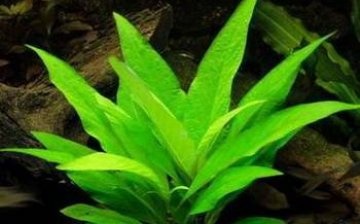
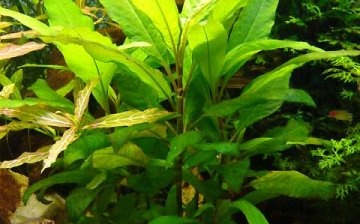
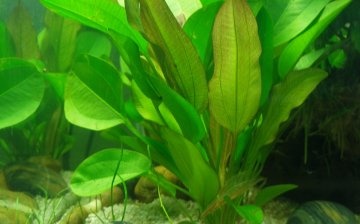
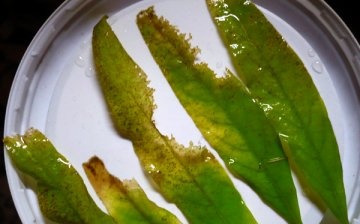





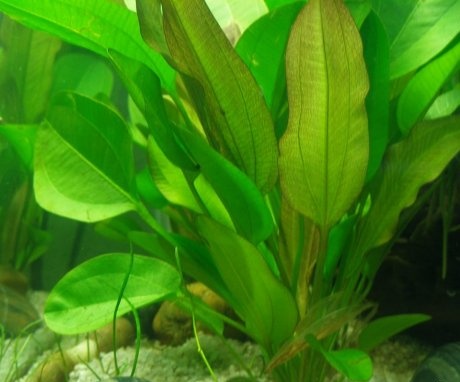
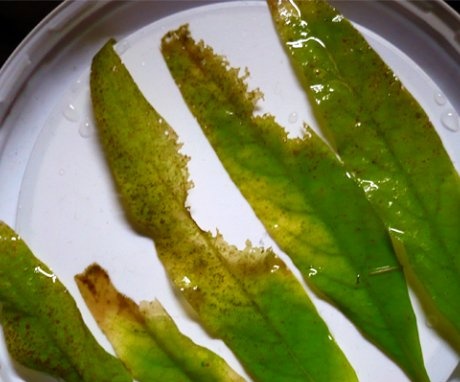
Not everyone can give light to this plant for 12 hours in a row, I read the size of the plant, it definitely will not suit those who have a small aquarium. In general, these are very beautiful algae.
Yes, this is a plant for a large aquarium. Quite unpretentious, the main thing is that there is sufficient lighting and not too cold water. It is better to plant on the back of the aquarium.